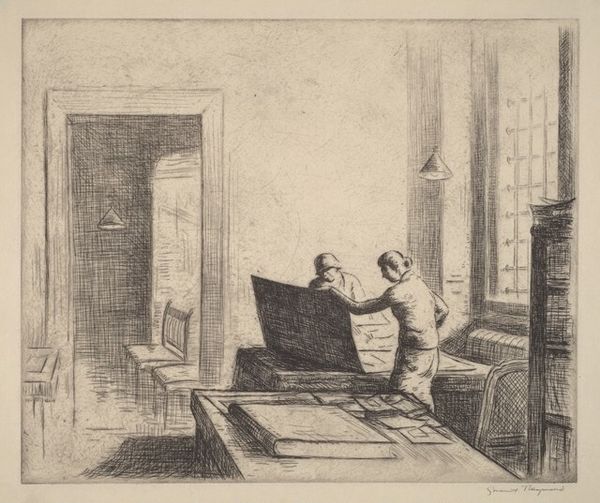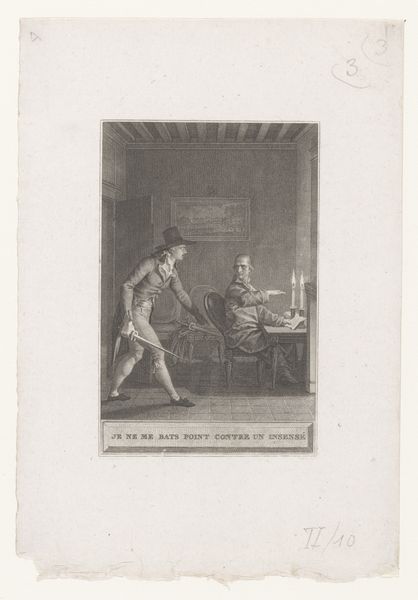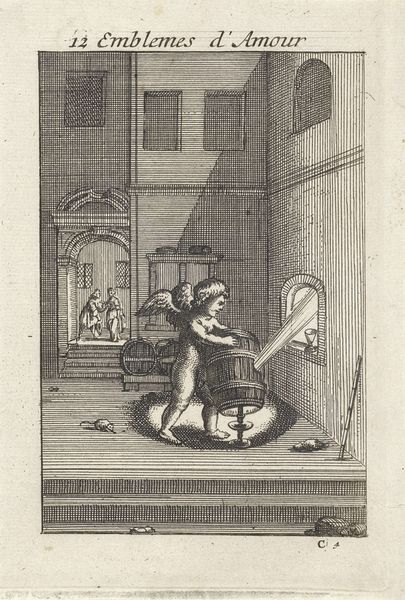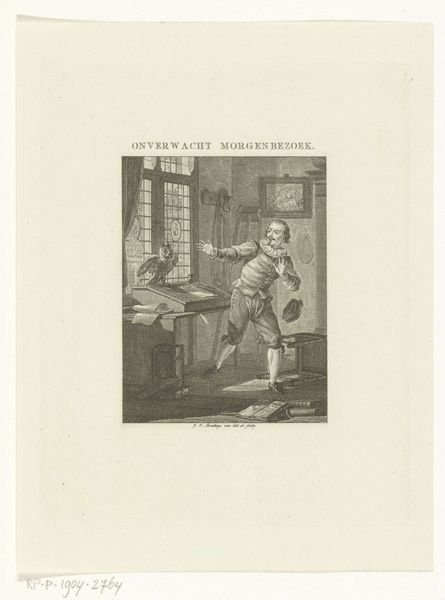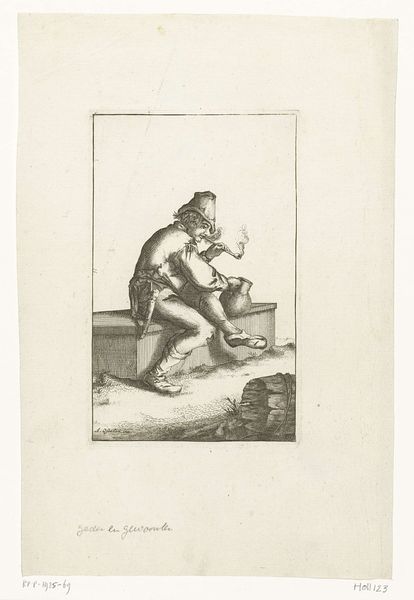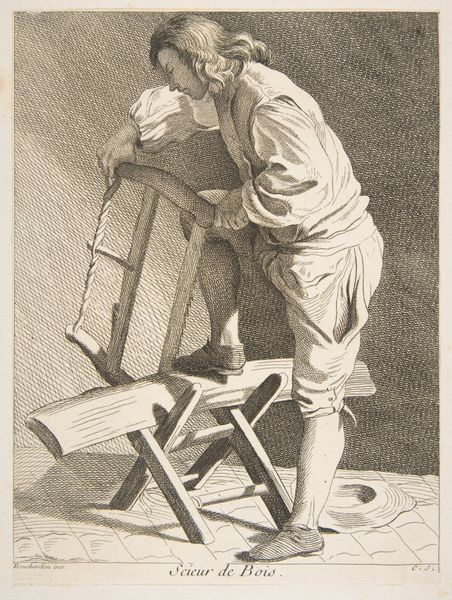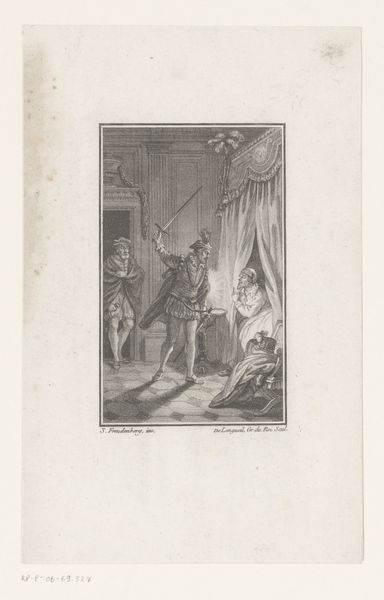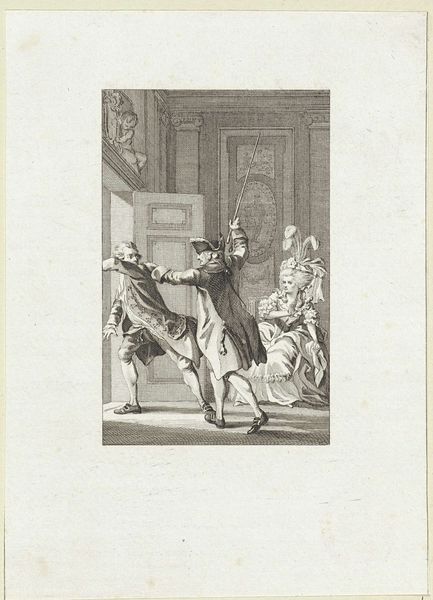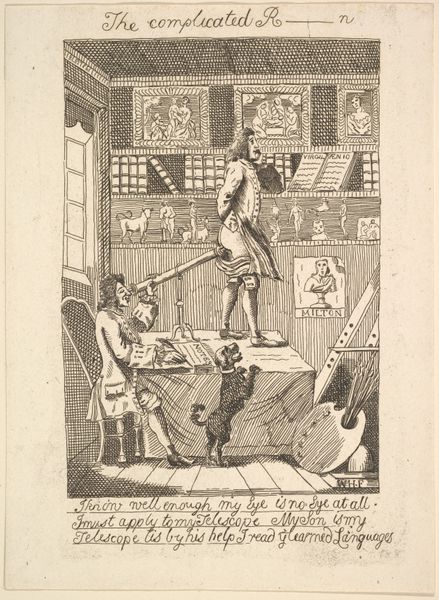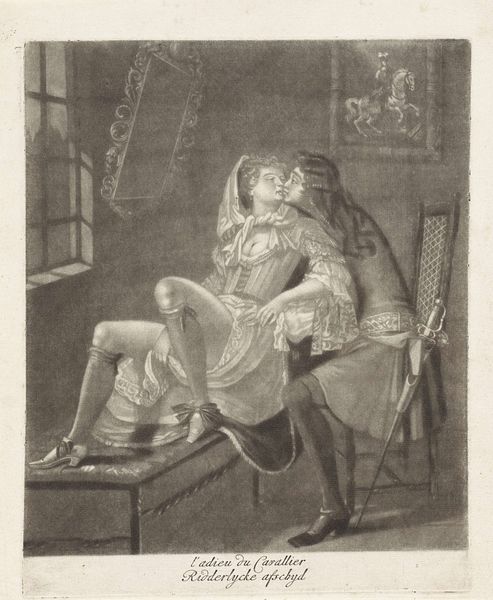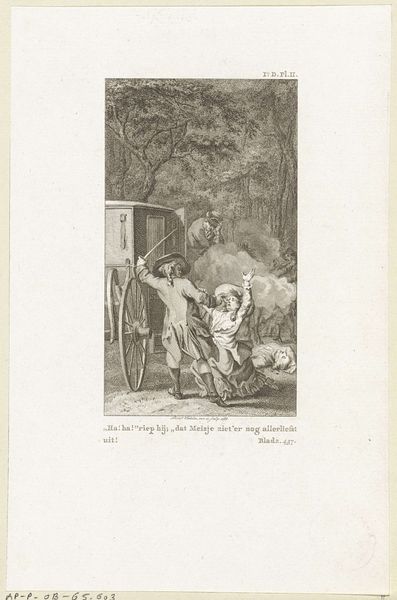
print, engraving
#
portrait
# print
#
history-painting
#
engraving
Dimensions: height 105 mm, width 74 mm
Copyright: Rijks Museum: Open Domain
Curator: The print we’re looking at is titled "Tsaar Peter de Grote in Zaandam, 1697," rendered sometime between 1762 and 1833 by Meno Haas. It’s an engraving. Editor: The figure appears somewhat awkwardly positioned. There's a rigid quality to the etching itself that almost flattens the figure against the background. Curator: Yes, Haas is depicting Peter the Great during his incognito visit to Zaandam. The setting and craft symbolize Peter's mission: to learn shipbuilding firsthand. Note how the tools are scattered about on the floor and foreground, emphasizing his hands-on involvement in this Dutch trade. It tells the story of his eagerness to modernize Russia, literally through labor. Editor: I agree the composition clearly highlights his actions. He’s centrally framed in front of a prominent doorway. This reinforces the act of engagement as it frames Peter as an active figure instead of remaining isolated and contained within Russia’s borders. There is a symbolic weight to the use of geometric forms versus organic, highlighting modernization. Curator: Right. Also notice the play of light. He isn’t centered and seems slightly caught in shadow, contrasting sharply with the tools that are more illuminated and highlighted in the work’s composition. This perhaps emphasizes his unusual position. Peter wasn’t born into such an environment, which gives it an air of the Tsar taking on the cultural labor as if in disguise. Editor: A disguised Tsar or an uninitiated novice? Either way the formal qualities—line, form, value—work together to visually signal something between high and low, industry and inexperience. I am interested in the function and symbolic framing in the etching overall, because its technical composition allows one to recognize this act of labor. Curator: For me, the image communicates a pivotal moment, the symbolic action of cross-cultural dialogue that allowed Peter the Great to modernize his empire. A moment where power meets practice, informing future political directions through the acquisition of cultural technologies. Editor: Exactly. What begins as a rather straightforward exercise of line and form in a black-and-white medium actually expands outwards, both literally and symbolically, towards dialogue.
Comments
No comments
Be the first to comment and join the conversation on the ultimate creative platform.

